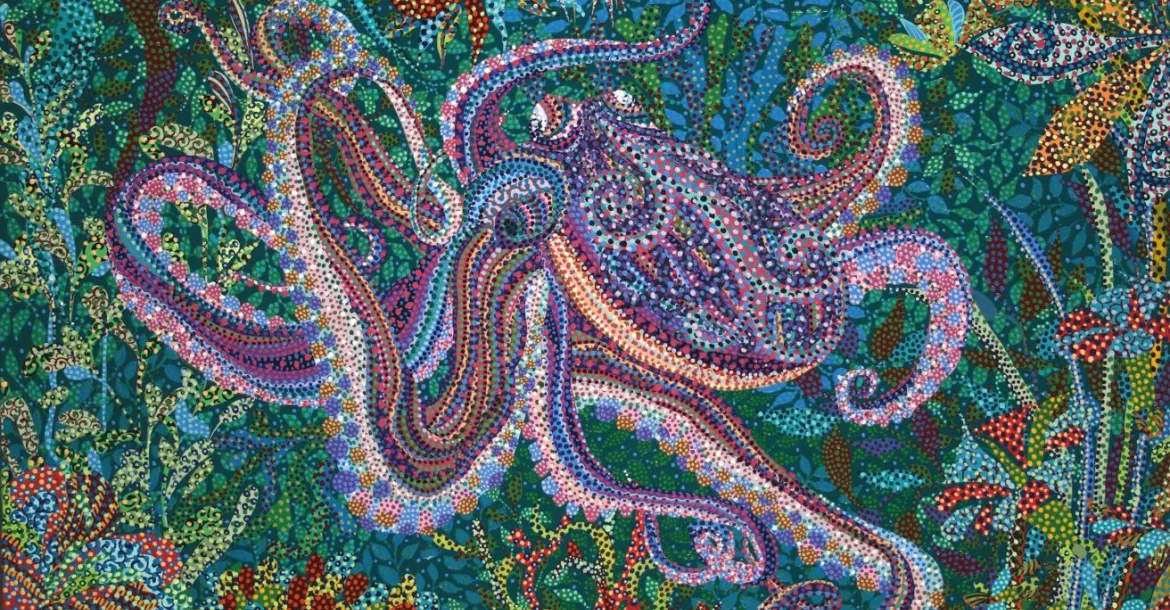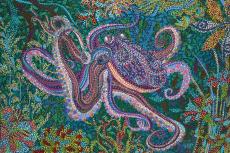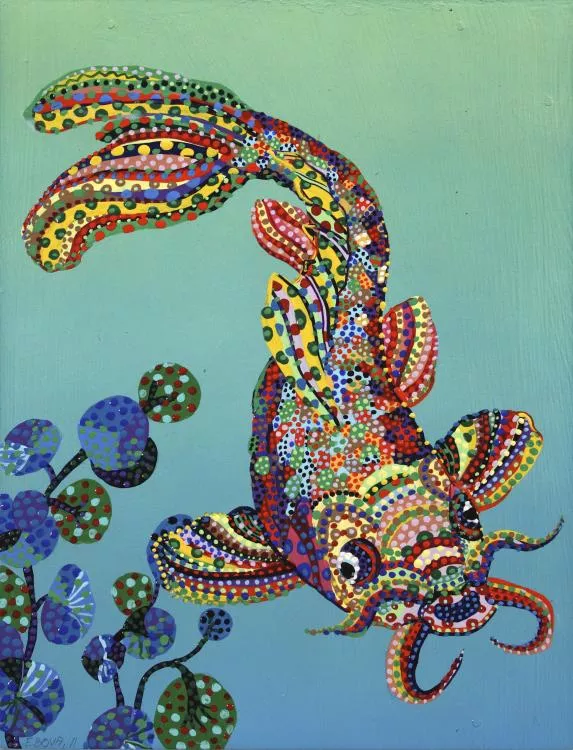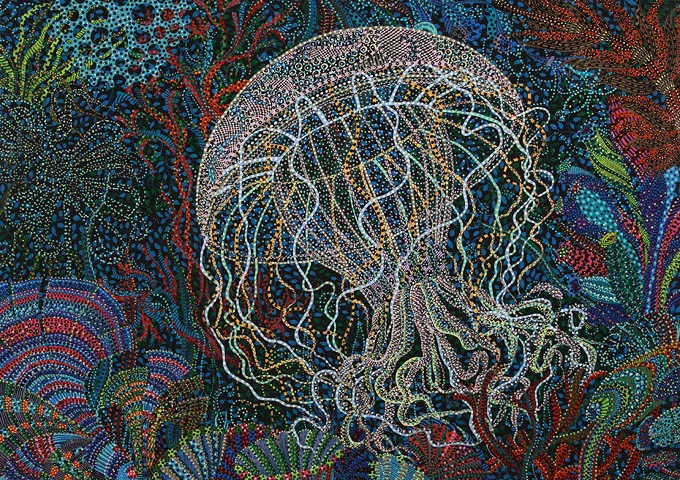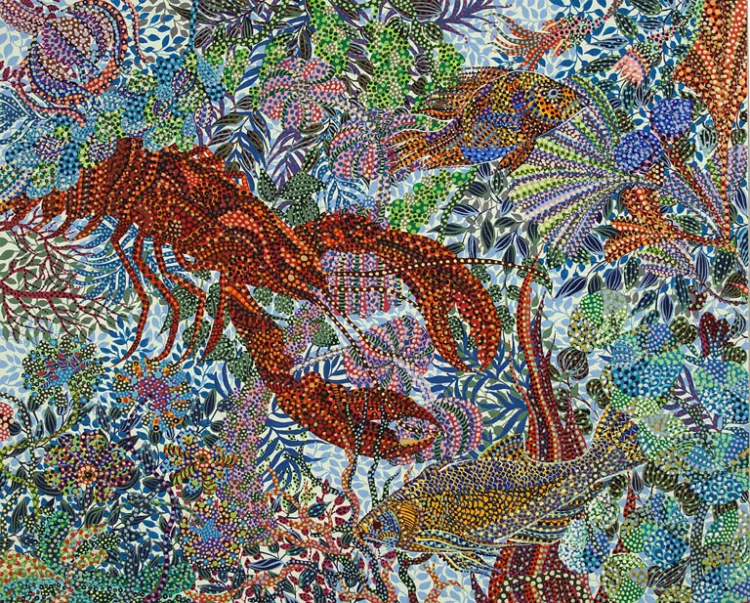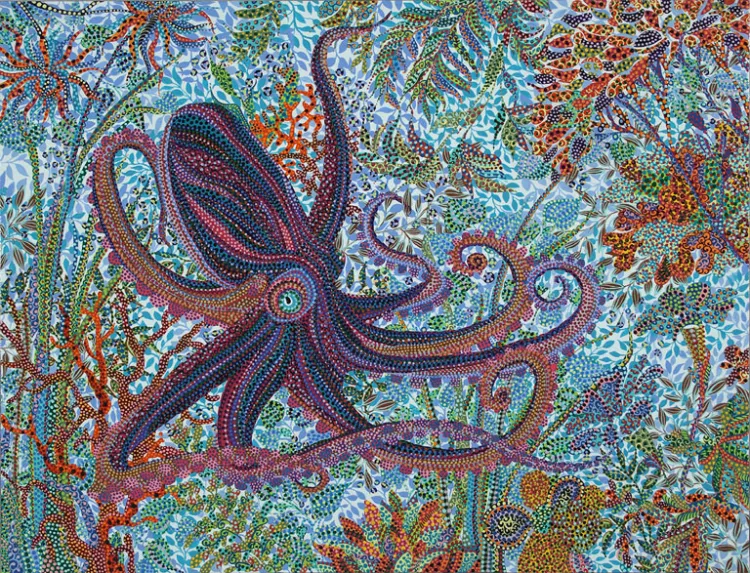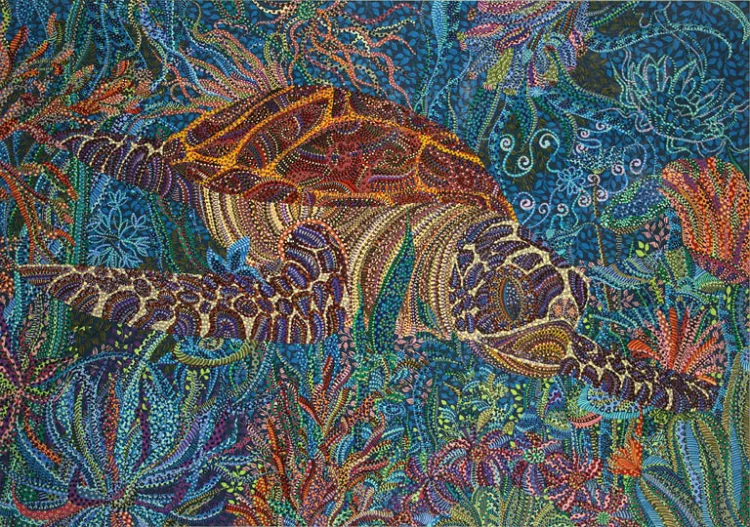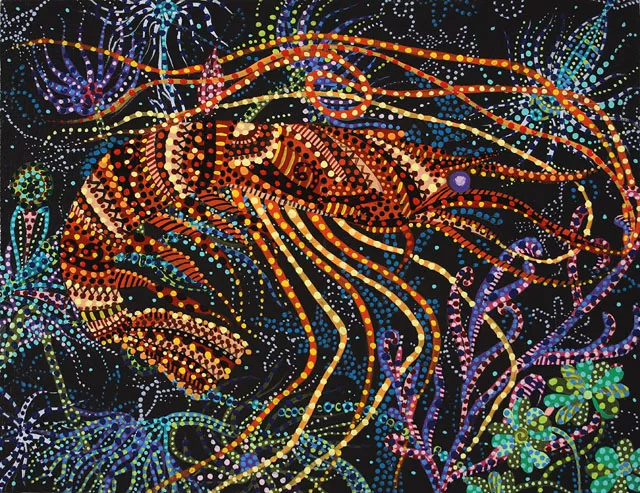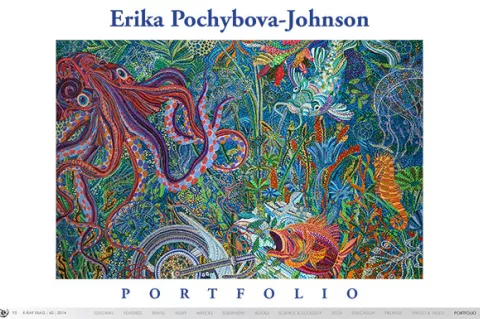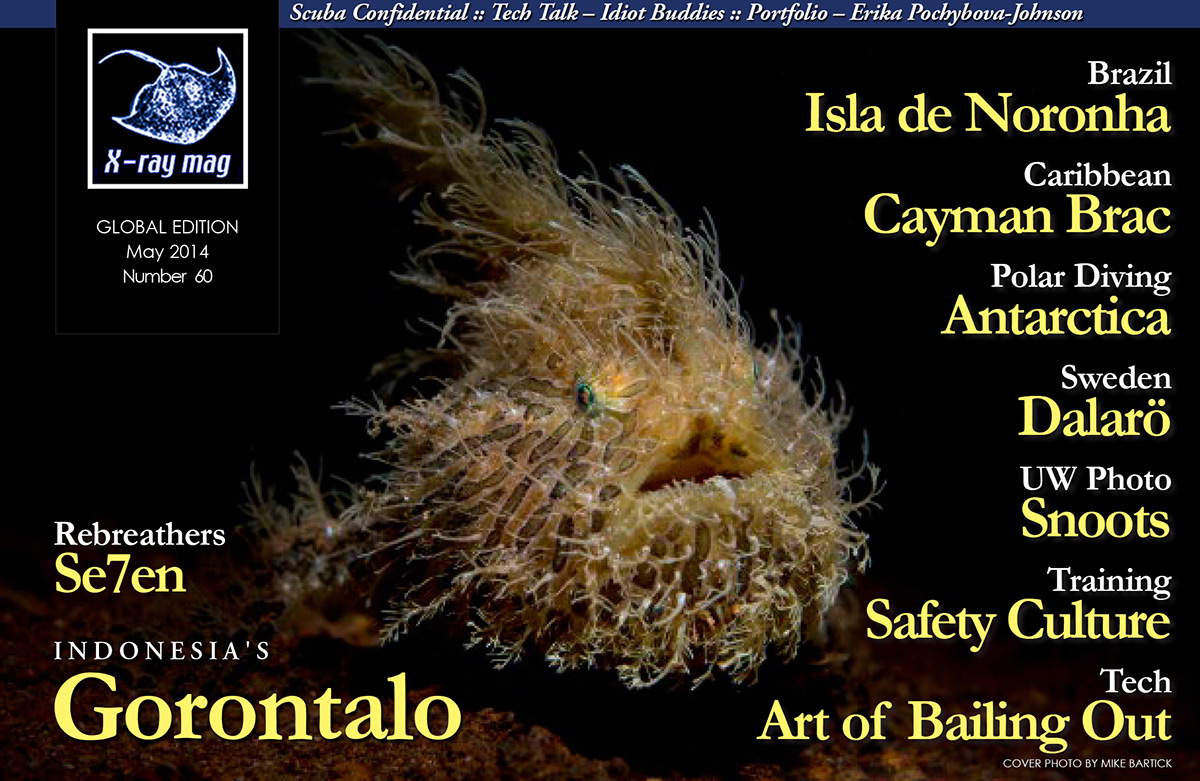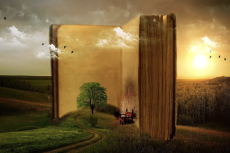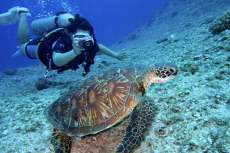Originally from Slavakia, self-taught artist Erika Pochybova-Johnson creates brilliant, spell-binding, intricate paintings inspired by nature, the sea and its creatures. Now based in Lubbock, Texas, the artist shared with X-RAY MAG her artistic vision and connection to the underwater world.
Contributed by
X-RAY MAG: Tell us about your background, your roots and how you became an artist.
EPJ: I grew up in Bojnice, which is an old city [in Slovakia] known for its tourist attractions, such as one of the most visited castles in Europe (first mentioned in 1113), the oldest zoo in Slovakia and one of the oldest spa resorts in Slovakia.
The house in which I grew up is located right by the Bojnice Castle (a five-minute walk from our house) and touring the castle and its exhibits (including numerous traveling art shows of European art) was one of the most pleasant and interesting activities I did throughout my youth.
In addition, both of my parents are big appreciators of European art (in any form) and we took many trips throughout the country to visit many historical areas that contain amazing collections of art. In addition, the town lies in the Nitra River valley and is surrounded by beautiful mountains.
Often, we would take hiking trips, mushroom-hunting trips, or just simply trips into woods and explore the wonders of the surrounding nature. I believe these experiences have not only established my strong appreciation for art, beauty and nature but also have influenced my work and my vision of the world considerably.
X-RAY MAG: What is your artistic mission or vision?
EPJ: The arts, in general, are a means of sharing the human experience. The visual arts, in particular, imbue an object, such as a painting or sculpture, with a wordless language of thought, emotion and visual experience.
The object is static, but it can bridge the gaps of space and time. The artist’s vision can trigger a feeling of recognition in the viewer or present a new way of looking at a familiar thing. It is like a conversation without words between two people who have never met.
This simple yet magical quality is what has drawn me to making art. For me, making art is about adding some beauty to the world. Whether it is beauty in truth, beauty in nature or beauty in and of itself, art objects have contributed to the quality of human life for centuries.
X-RAY MAG: What about the sea and its creatures inspires you?
EPJ: As a visual artist, the colors, shapes and lines of sea animals and plants are especially interesting because they are so different from what we normally see as surface creatures. I love the variety in their colors, the refracted light of the underwater world, and how their forms move with expressive gestures in seemingly zero gravity.
To me, it all combines to create a magical new dimension of life on Earth that is not appreciated often enough. The sea and its creatures inspire me with awe.
X-RAY MAG: Tell us about your experience in the underwater world, scuba diving or snorkeling. How and why did you start diving?
EPJ: I have always loved water. I almost drowned when I was a toddler, and after that, I spent countless hours in the water, learning to swim and swimming. When I was 15, I signed up for a scuba diving course. This brought a completely new dimension to my already developed love for water and swimming.
X-RAY MAG: What are your favorite dive sites, underwater subjects, locations?
EJP: I don’t really get to dive much anymore since I live in a very dry part of the world. But my favorite place that I have been recently was on the northwest coast of Costa Rica. In the water, I just love to see anything with color.
X-RAY MAG: Tell us about your paintings... How are they made?
EPJ: I think that the fact that I am a self-taught artist contributes considerably to my unique vision and the consequent uniqueness of my work. Because I am not academically trained in painting, I do not think of predefined rules, and I do not find any need to follow them—I do not even want to know what those rules are.
I invented my unique painting style intuitively. My images are created with thousands of dots that I carefully place, one by one by, on the surface of my paintings. I like to improvise when I work; I choose colors in my work intuitively, and often, I do not know what the final image is going to look like. I love moments of surprise in my work.
I do not look at my pieces from a distance to evaluate them until they are more than 80 percent done, and that, for me, makes the entire process even more fun and interesting. I like to express what I see in a way that seems very natural to me, and perhaps this contributes to the uniqueness of my style and imagery.
X-RAY MAG: Do you use underwater photography—your own or other sources?
EPJ: I do not paint from photographs, per se. I look at many images and create my own composition from various source materials and my imagination. I do not want to copy an image that I have already taken or seen, but rather create something that has never been seen.
My paintings represent an imaginary world that is influenced by real life experiences, encounters, and are recollections of my memories or visions. And painting is a wonderful medium for enticing people into looking at something in a new way.
X-RAY MAG: How does your art relate to conservation or environmental issues facing our oceans and reefs?
EPJ: One powerful element, to which people respond, is beauty. There is nothing quite like beauty, and people pay attention when they see something beautiful. My goal is to bring awareness about the beauty that is present in nature and the plants and animals of the underwater world—and how fragile it is.
One example: It has been almost 37 months since the Tohoku earthquake triggered a tsunami that devastated eastern Japan and severely damaged the nuclear reactors in Fukushima. This tragic event, that resulted in a continuous leak of harmful radioactivity, was the inspiration for my painting, Aftermath. At first glance, one feels the positive energy, a glorious underwater world, teeming with seemingly playful life. But upon further observation, one may wonder about a strangely out of place Japanese motorcycle.
The sea creatures appear disturbed and anxious about this unnatural intrusion. Barely visible, like radioactivity, in the chaos are arrangements of particles that form floating radioactive symbols and the logo of Tepco. (Tepco is the electric power company that was responsible for maintaining the nuclear reactors.)
When one takes the time to really see and contemplate the painting, it reveals a more complex world where all is not well. Aftermath is, at once, a tribute to some of the miraculous life our planet has produced and a warning about the fragility of that life—an apology to Nature.
X-RAY MAG: Why art? Why is art important? What are the challenges and benefits of being an artist today?
EPJ: I enjoy making art because it makes me feel like I am contributing something positive to the world. Looking at other people’s art, past and present, has enriched my life, and I want to contribute a little something to the giant fabric of human culture.
There are some challenges with being an artist but the rewards, both personal and professional, far outweigh them. And to me, true artistic success is having the peace, time and resources that allow one to make art for most of the time one spends on Earth.
X-RAY MAG: What’s next? New? Upcoming?
EPJ: My goal is to continue striving to bring more beauty to the world with my paintings… and perhaps raise the awareness about the fragility of nature. I want to pay tribute to nature’s purity and hope that our civilization will learn to live in harmony with that.
I also would like to learn to see the world through the eyes of animals, whose spirits are pure, and discover some universal truths that would help us humans get along in the world. I continue to have some hope. ■
For more information and to purchase art work or prints, visit: www.ebova.com or www.erika-pochybovajohnson.artistwebsites.com/index.html.
"I want to pay tribute to nature’s purity and hope that our civilization will learn to live in harmony with that."
— Erika Pochybova-Johnson

